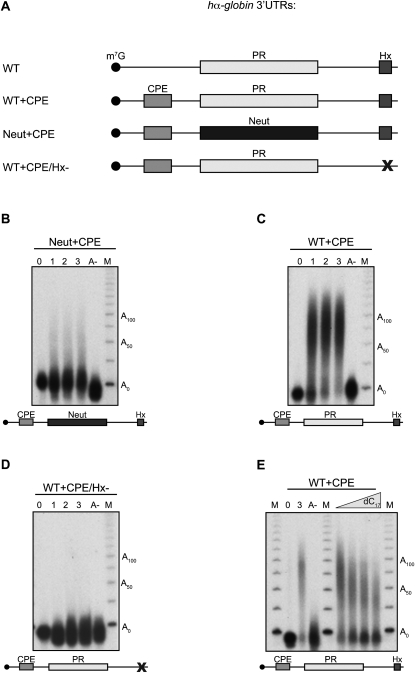FIGURE 4.
The C-CPE can synergize with a classical maturation-type CPE to promote robust cytoplasmic polyadenylation in X. laevis embryos. (A) RNAs assayed for cytoplasmic polyadenylation in Xenopus embryos. Each study (B–D) was carried out as in Figure 2, B–E. CPE denotes the classical maturation CPE UUUUUAU. For other notations, see legend for Figure 2A. (B) hα-globin 3′ UTR RNA containing an inserted maturation CPE but lacking the endogenous C-rich PR element (Neut+CPE). This 3′ UTR undergoes modest polyadenylation. (C) WT α-globin 3′ UTR containing an inserted 5′ maturation CPE (WT+CPE). This 3′ UTR undergoes robust polyadenylation. (D) WT α-globin 3′ UTR + maturation CPE lacking a functional AAUAAA (mutated to AGUGGA; WT+CPE/Hx-). This mutation abolishes all cytoplasmic polyadenylation. (E) WT α-globin 3′ UTR containing an inserted 5′ maturation CPE (WT+CPE) in the increasing presence or absence of unlabeled oligo dC17 competitor. The competition highlights the contribution of XαCP2 to the synergistic cytoplasmic polyadenylation seen with the WT+CPE 3′ UTR. 0 indicates RNA from the zero hour time point; 3 indicates a 3-h time point sample with no oligo dC competition. RNAs were harvested 3 h after injection for all competed samples.

